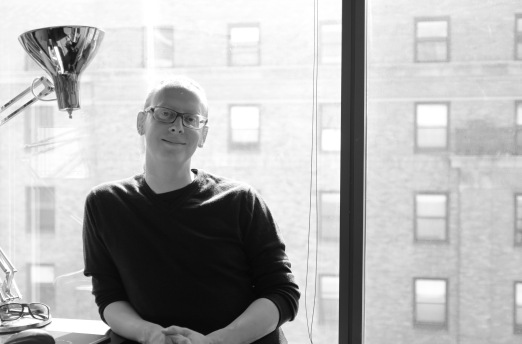I had the pleasure of speaking with Sasha Costanza Chock, a researcher and mediamaker, currently associate professor of Civic Media at MIT’s Comparative Media Studies program and cofounder of Research Action Design.

Sasha shared his views on how targeted communities should be involved in design processes in order to develop solutions that are more responsive to their needs and what should be the role of designers in the elaboration of those processes.
There is a growing community of people exploring ways to facilitate the involvement of community residents in the development and delivery of public services. By incorporating end-user feedback early in development and by enabling alternative solutions to be explored simultaneously, methodologies pioneered in the design professions (design thinking, human-centered design, participatory design, etc.) are seen as a way to achieve this goal.
Currently, one of the main focus of this growing community is to better understand how to do design practices in ways that are more rooted in communities. « How to build more horizontal design processes which will have more accountability to community groups? » as Sasha put it.
What are the existing models of design processes?
Sasha pointed out that the majority of practitioners in the design world are still doing « participatory design » or « human-centered design » processes.
In those cases, the community members are asked to participate as test-users, but designers remain the « experts ».
Municipal officials or big developers often rely on this type of process and organize community « charrettes ». During those intense and sometimes multi-day meetings, the input of the residents is asked, but the final decisions is still made by the city or the developer.
Whereas in « co-design » or « collaborative design » processes, design teams have members on it who are from a community-based organization or a neighborhood association. In this case, true partnerships are built between community based organizations, civic technologists, developers and designers.
What does this mean in practice?
« In a design process, it is less about finding community members to participate but it is much more about partnering with a community-based organization that represents a community. » explained Sasha.
Thus, it is important to initiate a partnership with the community-based organization impacted and to develop a relationship prior to approaching the relevant public agency or developer.
« In fact, if you start by approaching the city, then it is still going to be a top-down process. » noted Sasha.
And regarding a concrete civic issue?
To better illustrate the existing processes, Sasha chose the case of housing, which is currently a crucial issue in Boston. Indeed, with numerous investments from the biotech and software industries and gentrification processes, prices are going through the roof and working people and communities of color are getting pushed out.
To address this situation, two different types of projects can be developed, leading to distinct outcomes:
- a design process with the city housing agency will « usually end up being something about transparency or about the data » whereas
- a design process with a community-based organization fighting for housing for low incomes residents is more likely to look like supporting a campaign on the part of the community-based group in order to require affordable housing as a certain percentage of new developments or the development of community land trusts.
Sasha mentioned the collaboration between City Life/Vida Urbana (a tenant rights organization in Boston) and some MIT city planning students, as part of the co-design class within the Media Lab at MIT in 2013. This collaboration led to the creation of easy-to-understand carnival games that translate the complexities of the housing market. There were designed to be used in public events and fairs around the city to help educate people.
Any recommendation for passionate designers?
« If technologists and designers are not careful, their enthusiasm for creating public participatory processes could get taken advantage of and used by the most powerful actors in a particular setting. »
Thus, Sasha encourages professionals to think more about : « What community is being pushed out? Who is being left out of this urban development process and how can I use my technology or design skills to support their voices and to make them more visible? »
« Through design practices you can create a space for people who have already been working on a particular problem to speak to the public officials. »
« Designers should be the bridge between the city agencies and the community-based organizations » Sasha concludes.
——-
As mentioned in the beginning of this article, Sasha Costanza Chock participates and supports the types of « collaborative design » processes to which he refers in two ways: First, as a faculty member by leading the Co-Design Studio based at MIT where students partner with community-based organizations to generate civic media projects that are grounded in real-world community needs and belong to them. Secondly, as the cofounder of Research Action Design, a worker-owned collective that uses collaborative design, technology development, community-led research and transformative media organizing to build the power of grassroots social movements.

Raphaëlle! I am so excited to follow your blog! I hope you have a great time in Chicago… 🙂
LikeLike